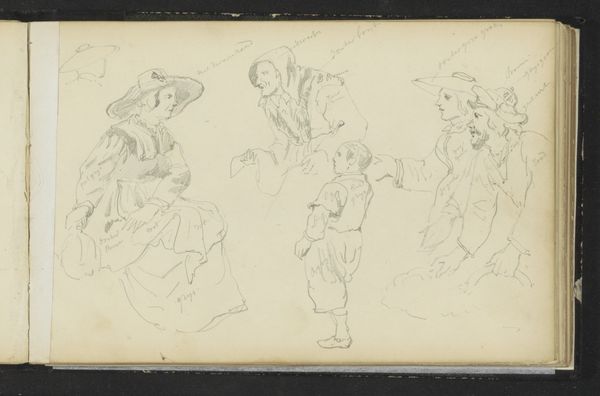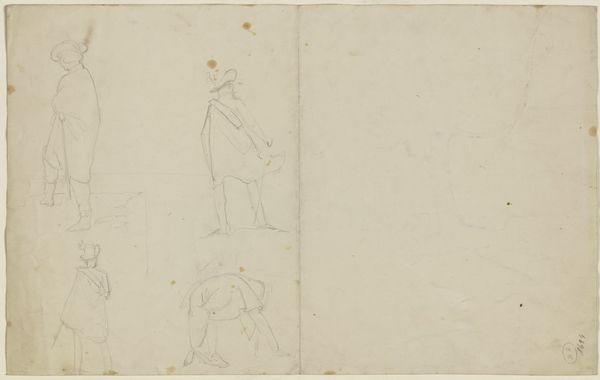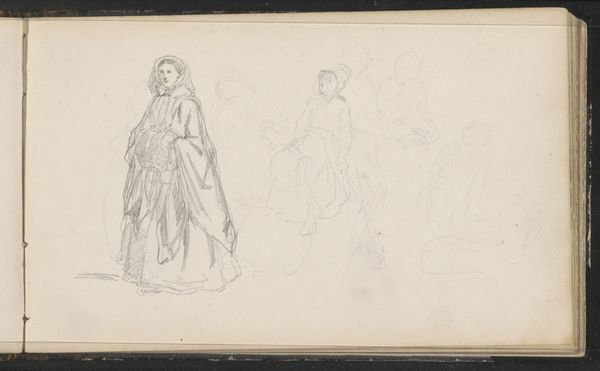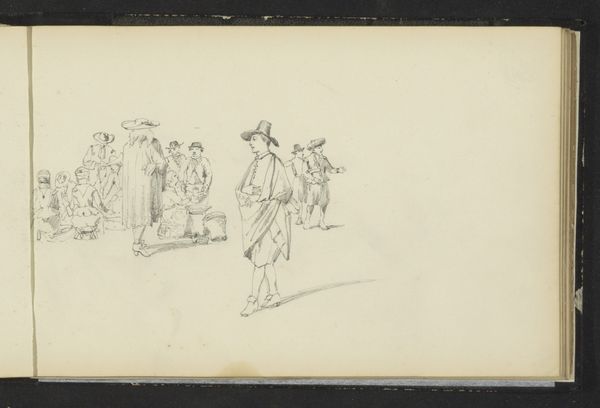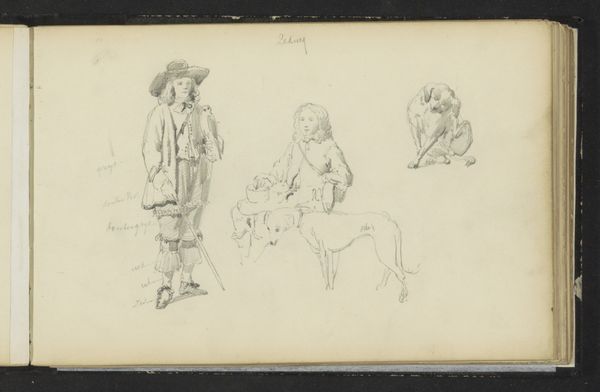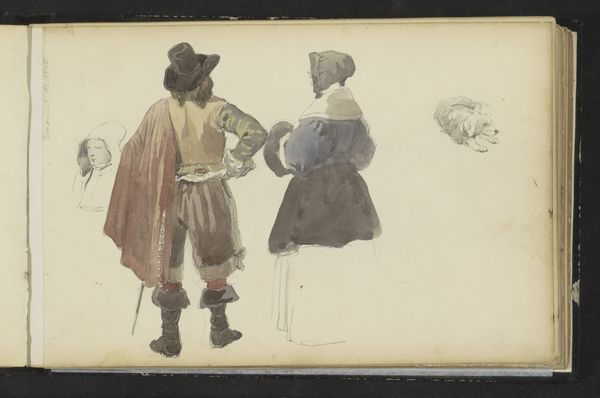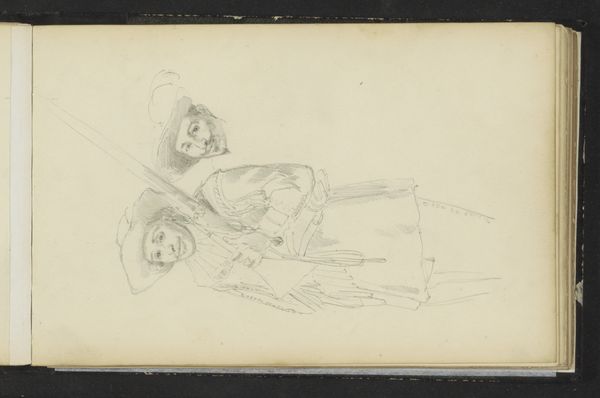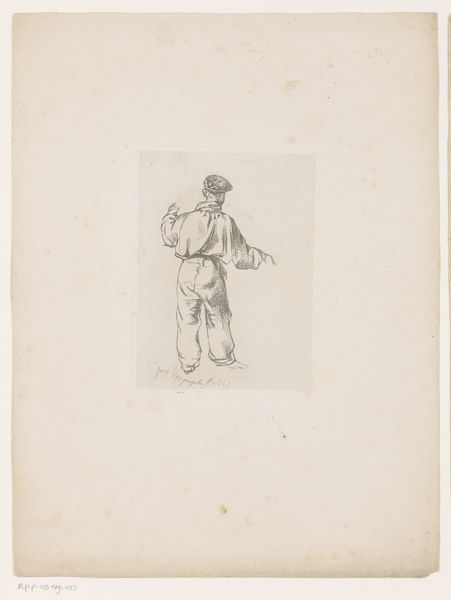
drawing, paper, pencil
#
drawing
#
aged paper
#
light pencil work
#
quirky sketch
#
dutch-golden-age
#
sketch book
#
incomplete sketchy
#
figuration
#
paper
#
personal sketchbook
#
character sketch
#
pencil
#
sketchbook drawing
#
genre-painting
#
storyboard and sketchbook work
#
sketchbook art
Copyright: Rijks Museum: Open Domain
Editor: This is Cornelis Springer’s "Man en vrouw in zeventiende-eeuwse kleding," dating from approximately 1846 to 1882. It's a pencil drawing on paper, and the style is reminiscent of the Dutch Golden Age. It feels like a quick character study, almost like something from a personal sketchbook. What social dynamics might be at play here? Curator: What I see here is Springer engaging in a dialogue with history itself. He's not just replicating 17th-century dress; he's interpreting it through a 19th-century lens, during a period of burgeoning nationalism and historical romanticism. We need to ask ourselves: what does it mean to look back and selectively reconstruct the past? How do these images perpetuate or challenge contemporary social norms regarding gender roles, for example? The woman carrying what seems to be a water bucket contrasts the armed man, implying traditional social constraints? Editor: That’s fascinating! So you're saying it's not just about historical accuracy, but about the artist’s commentary on his own time? I wonder what drove the artist to look back in time? Curator: Precisely. The appeal of the Dutch Golden Age at that moment cannot be understated. There were notions of national identity that authors and artists sought to conjure, which is intrinsically related to gender, power and class. Editor: So, by sketching these figures in older attire, Springer is not just depicting history but actively shaping how people in his own era viewed the past and themselves? Thanks! That reframes the artwork so thoroughly. Curator: Exactly. Always think about who is telling the story, when, and why. Considering such angles enables a deeper understanding of art. I learned to always consider these dynamics.
Comments
No comments
Be the first to comment and join the conversation on the ultimate creative platform.
